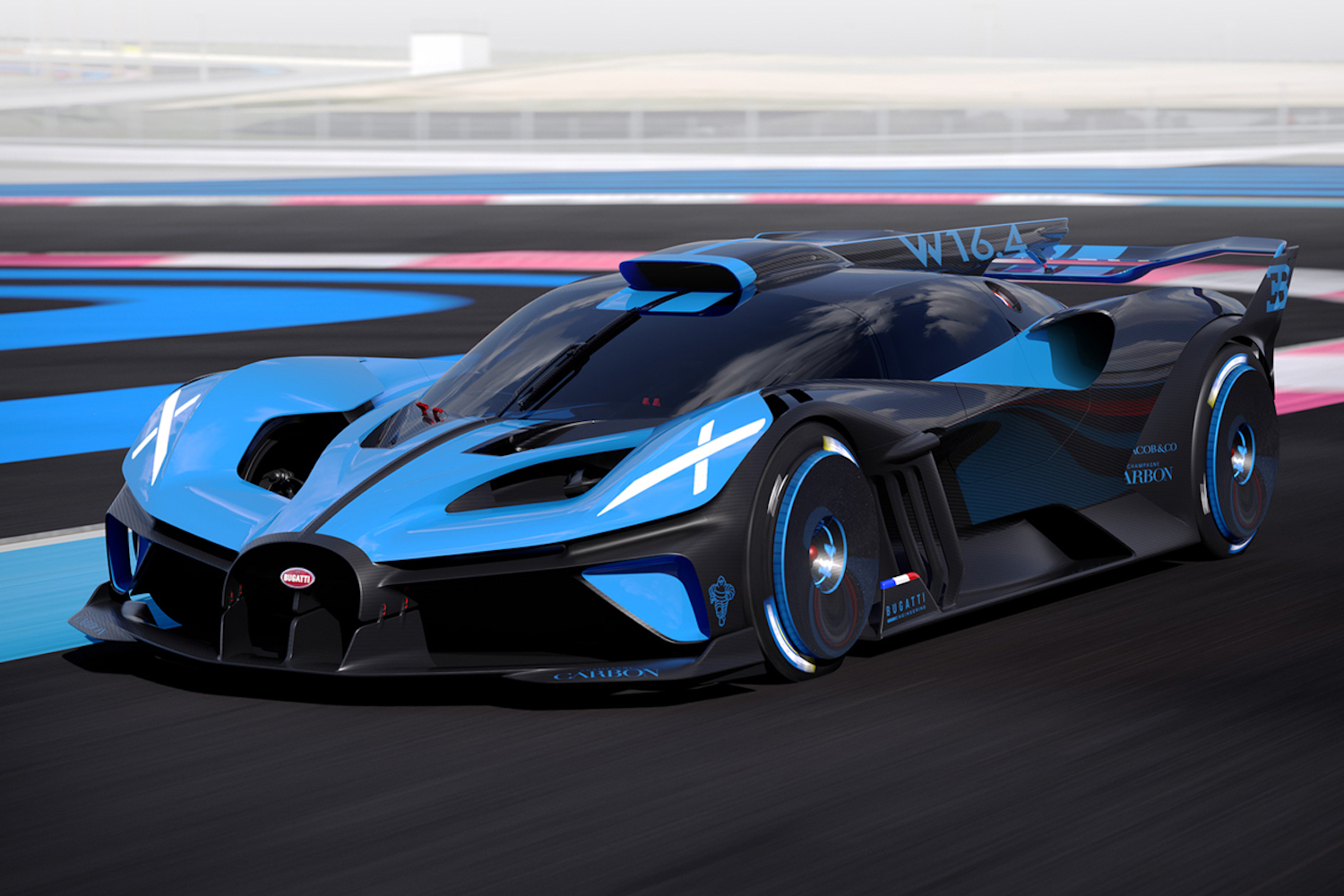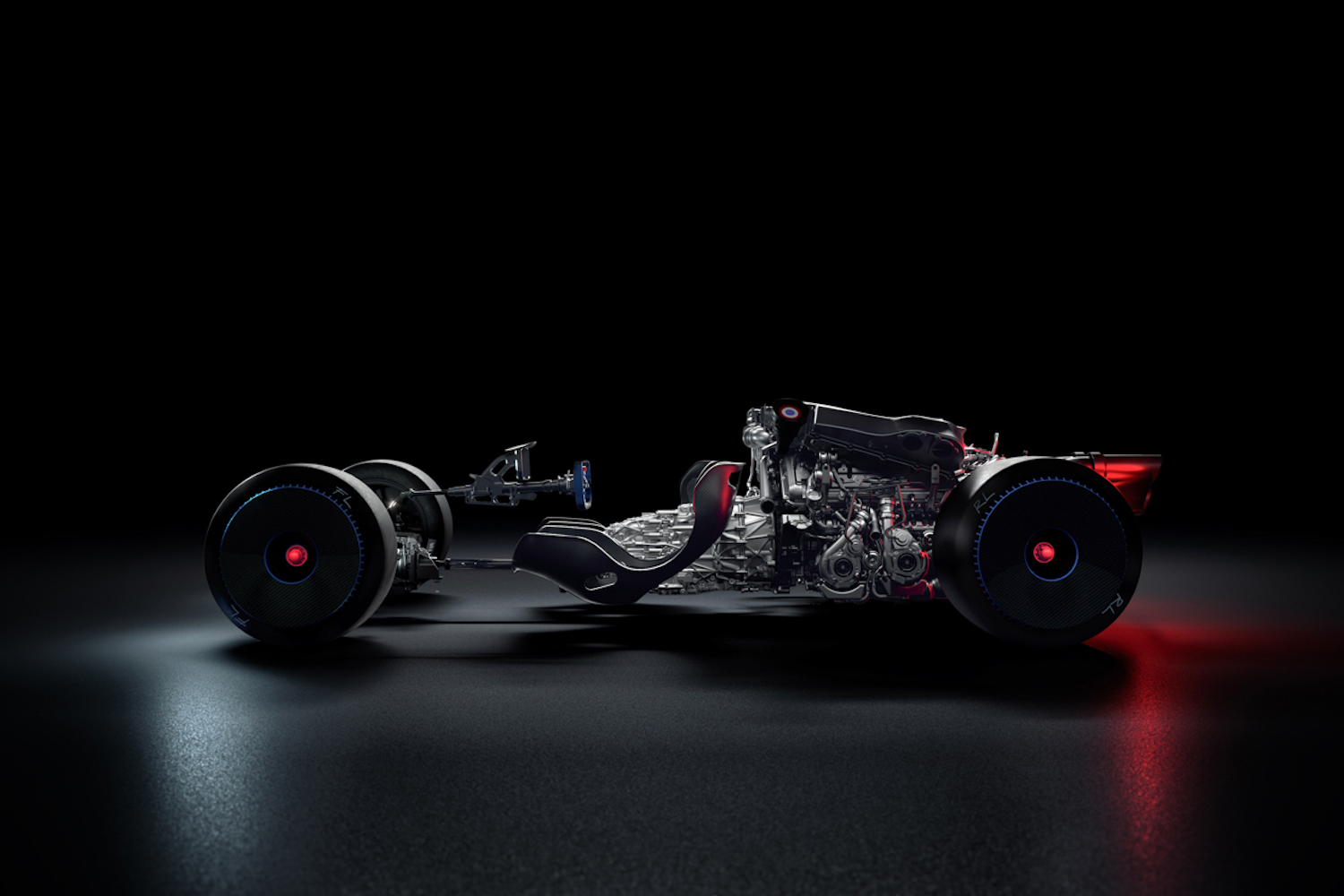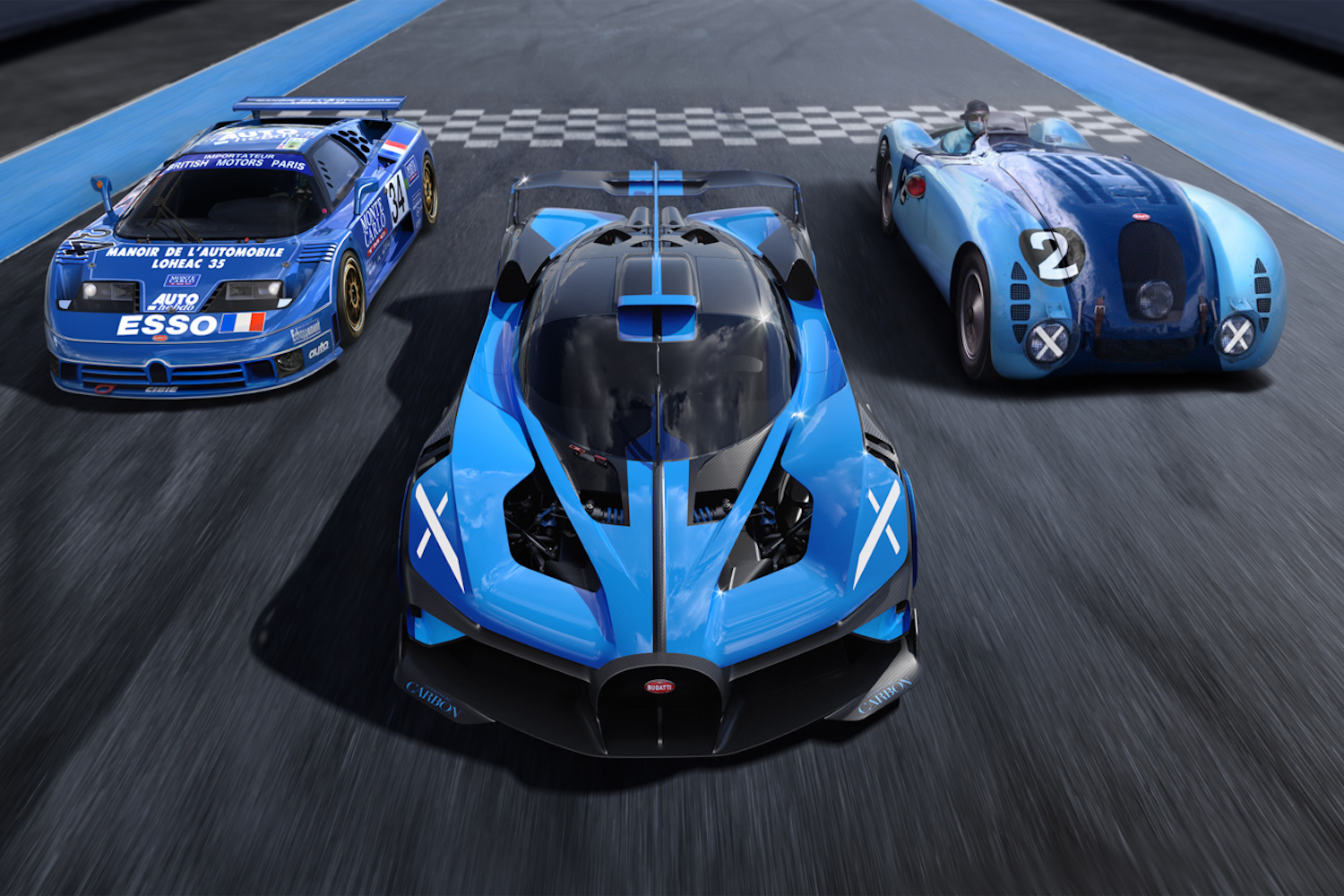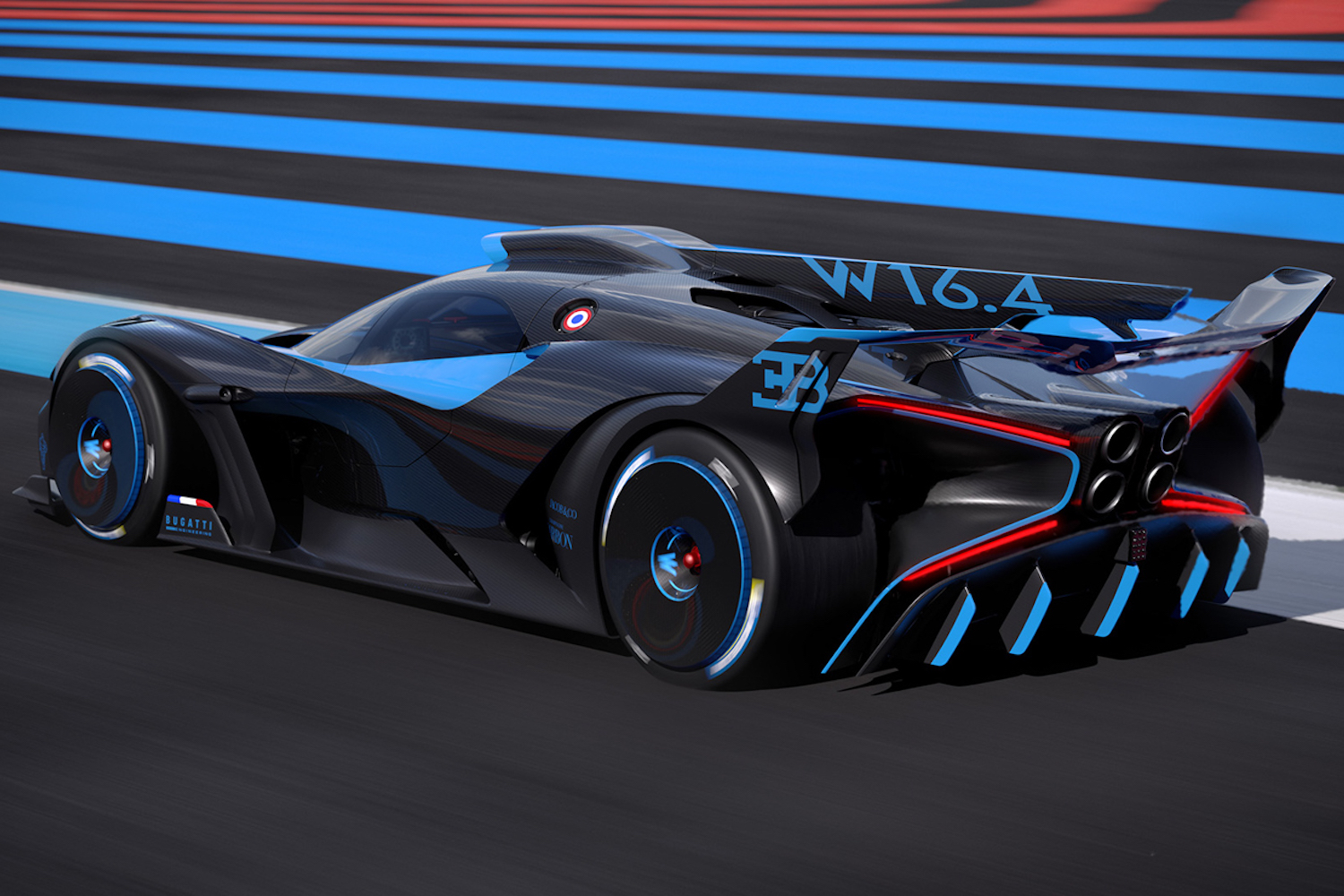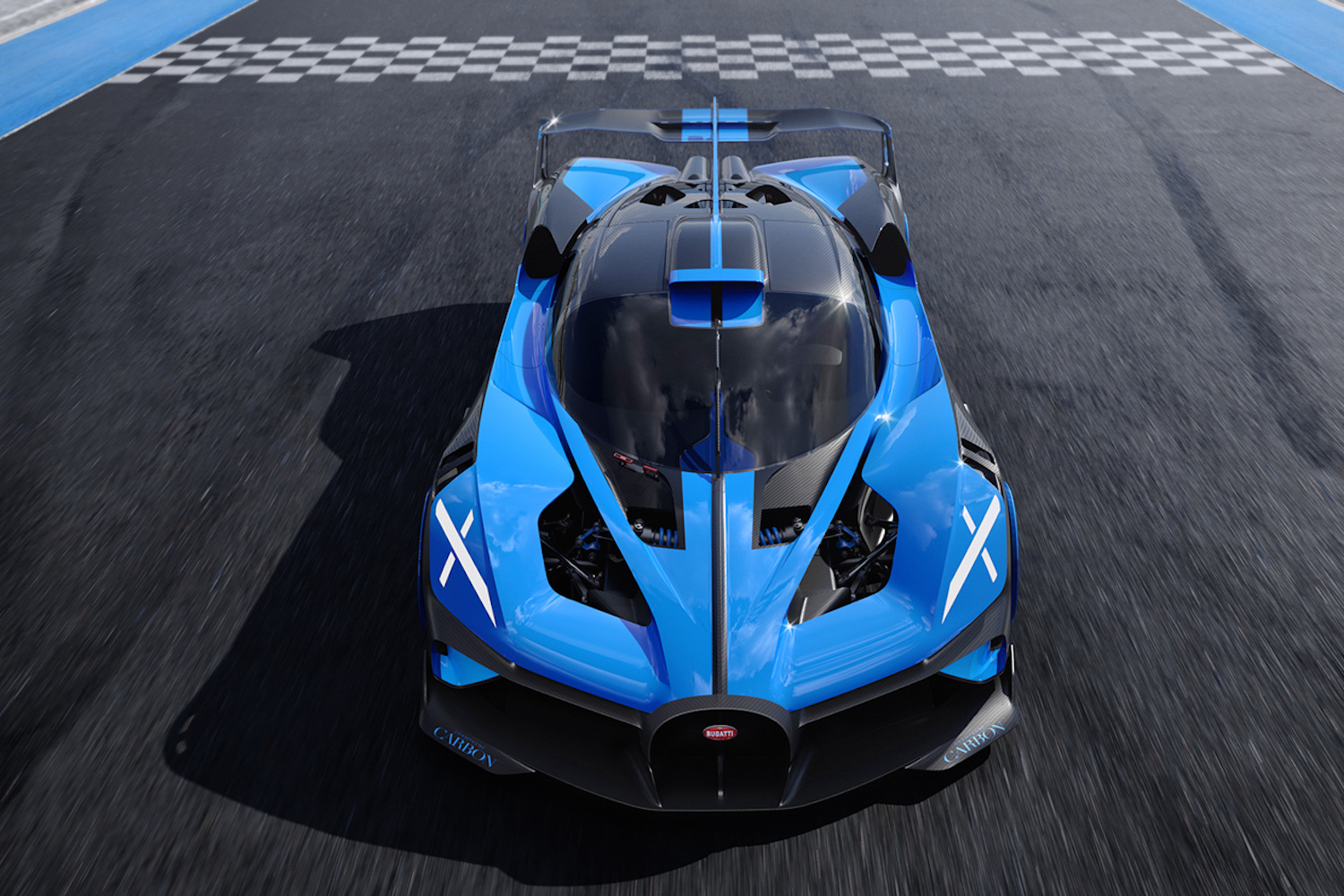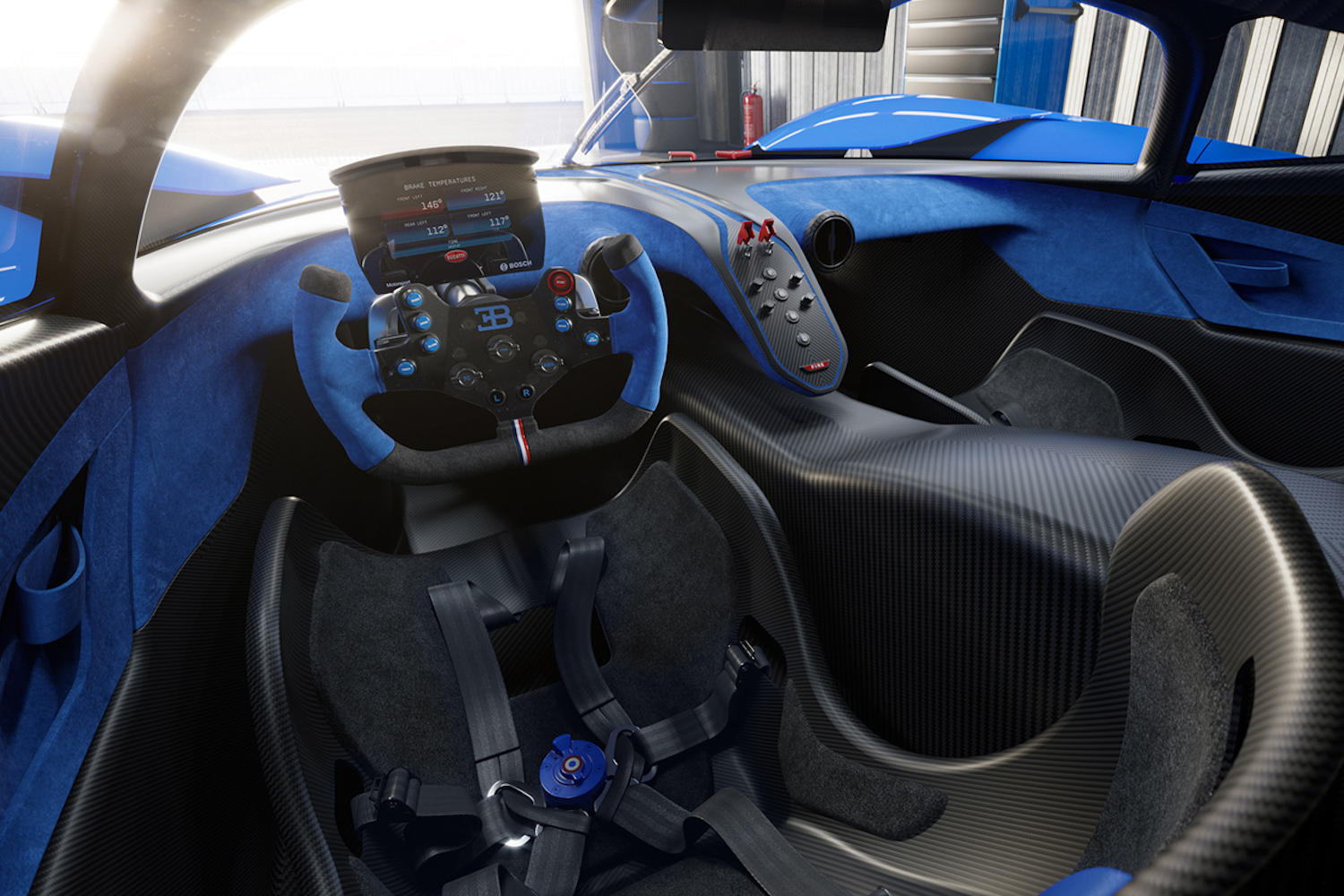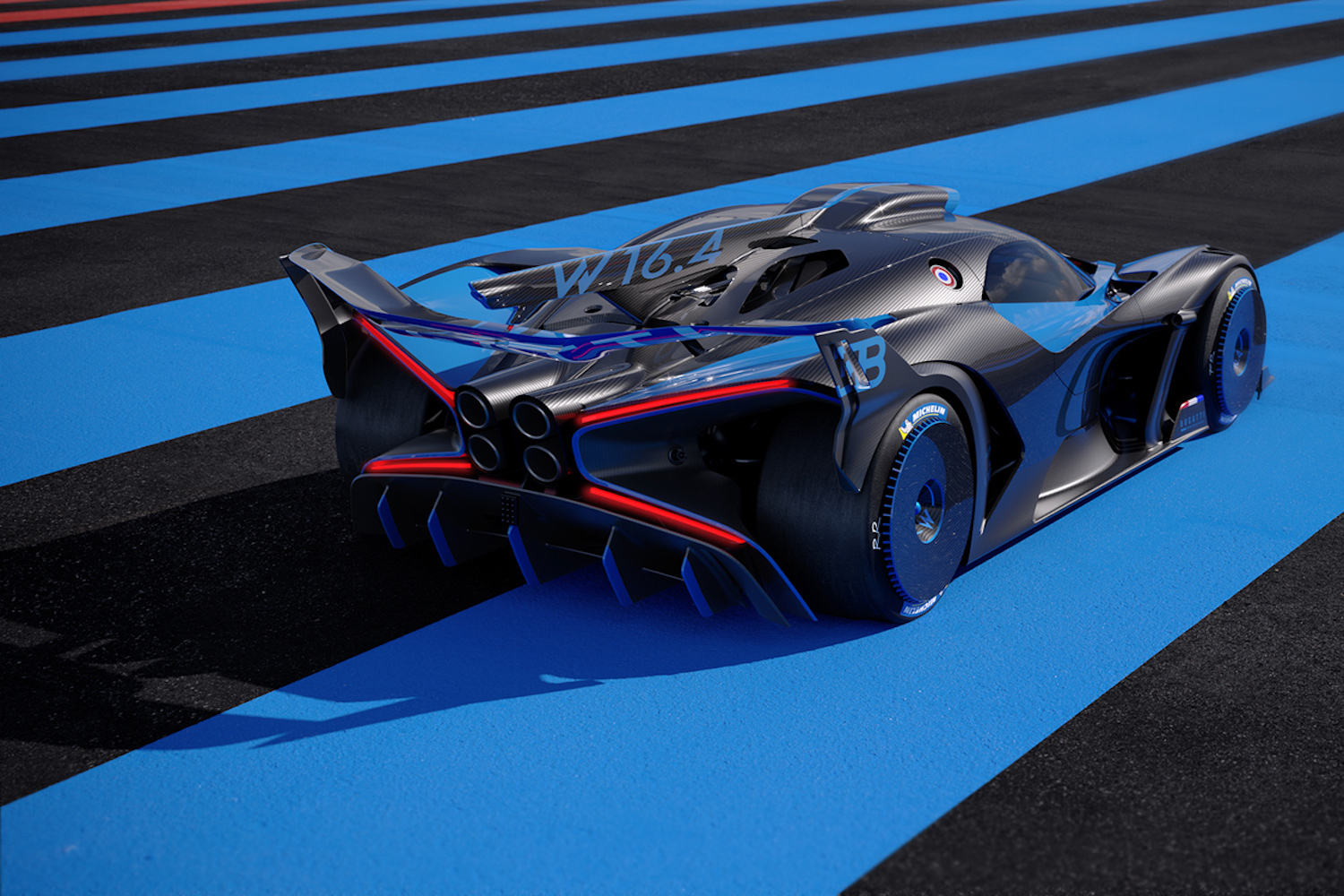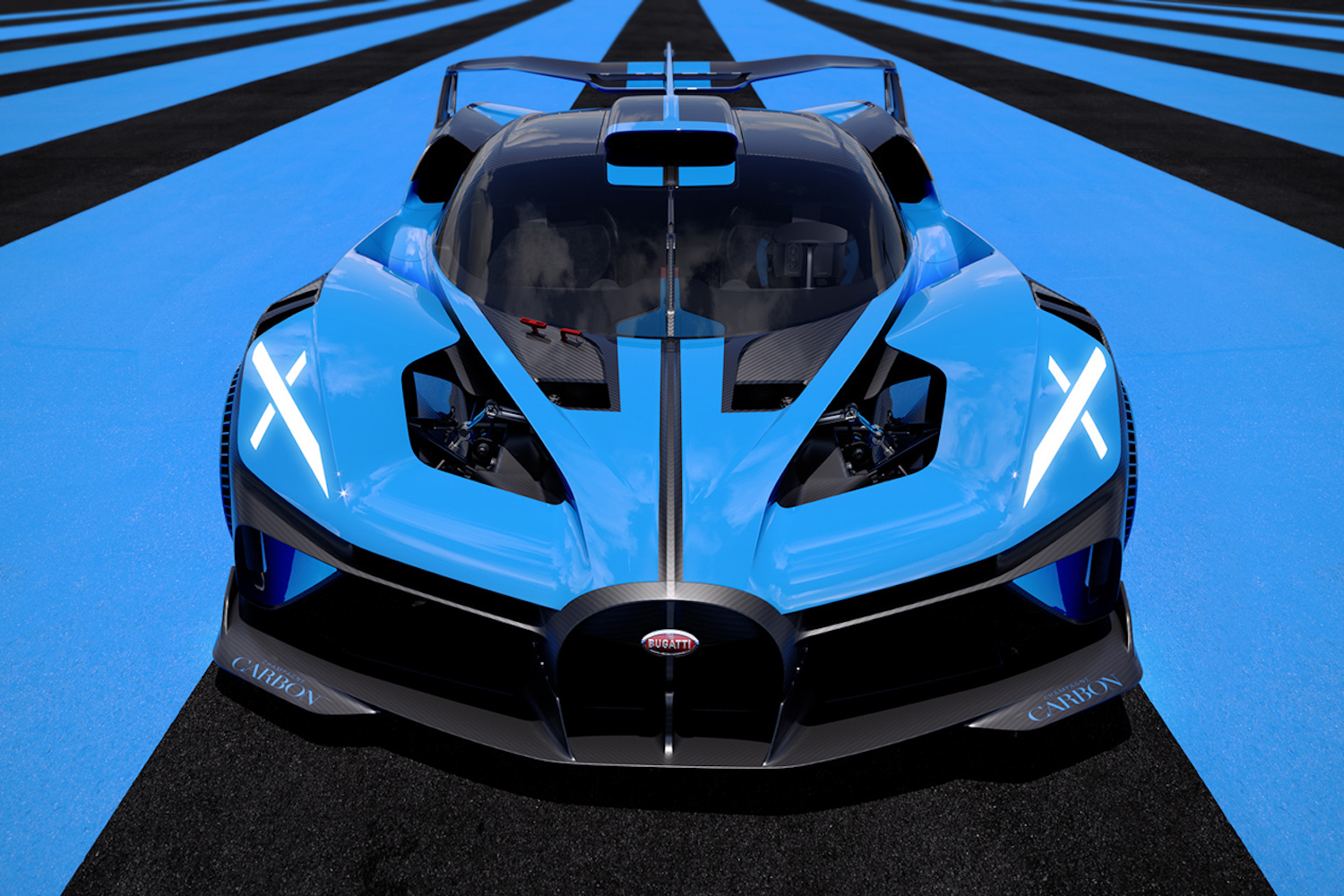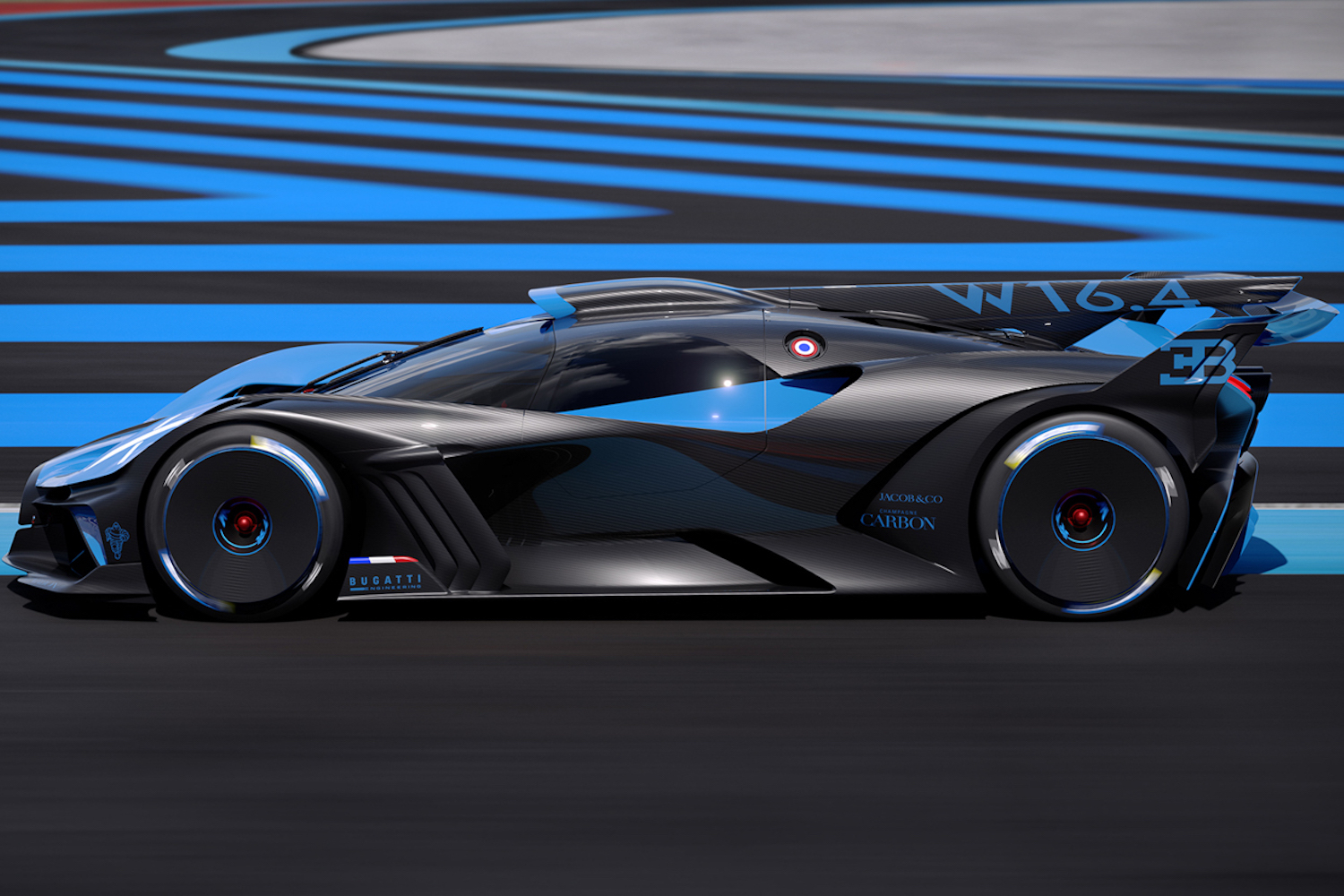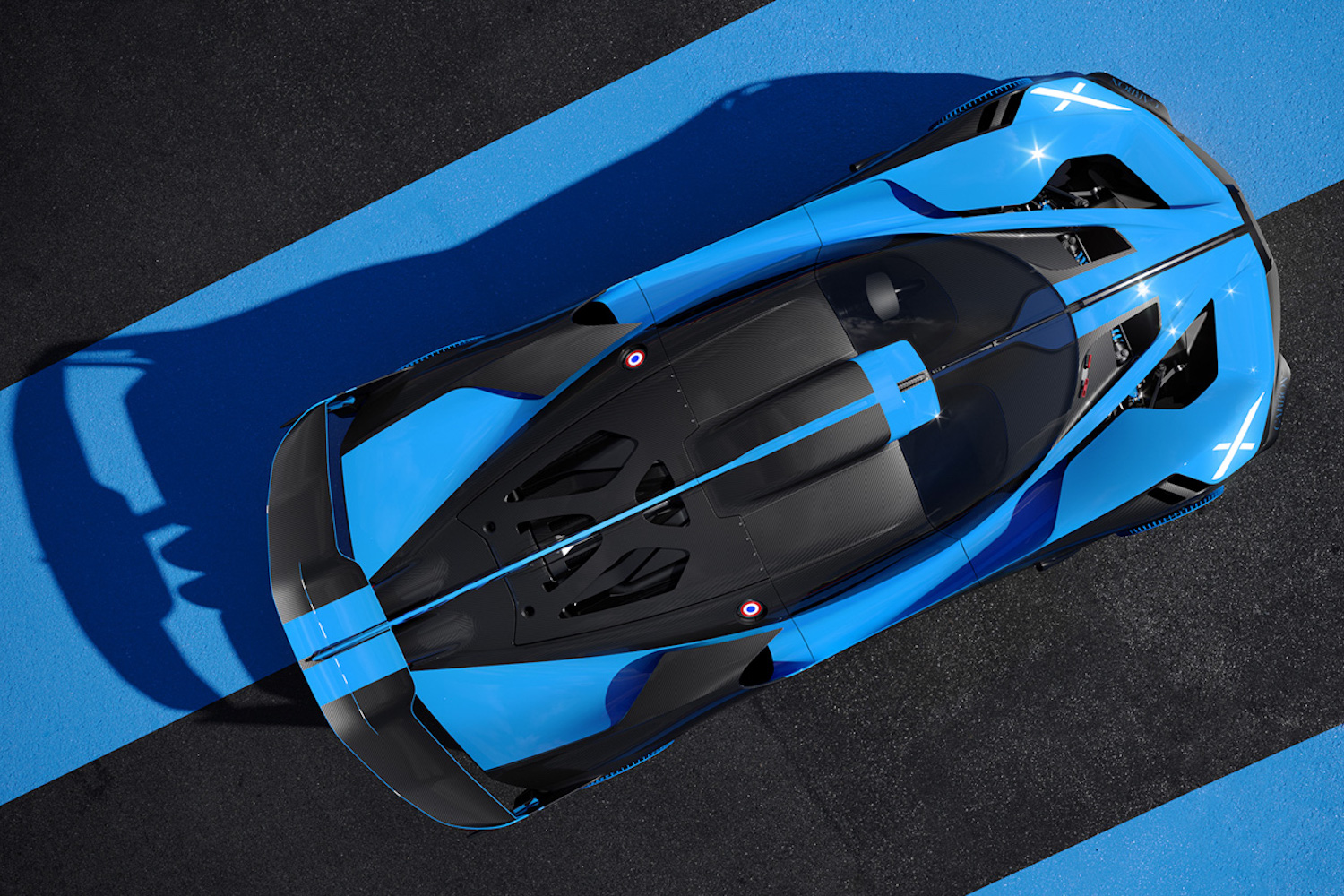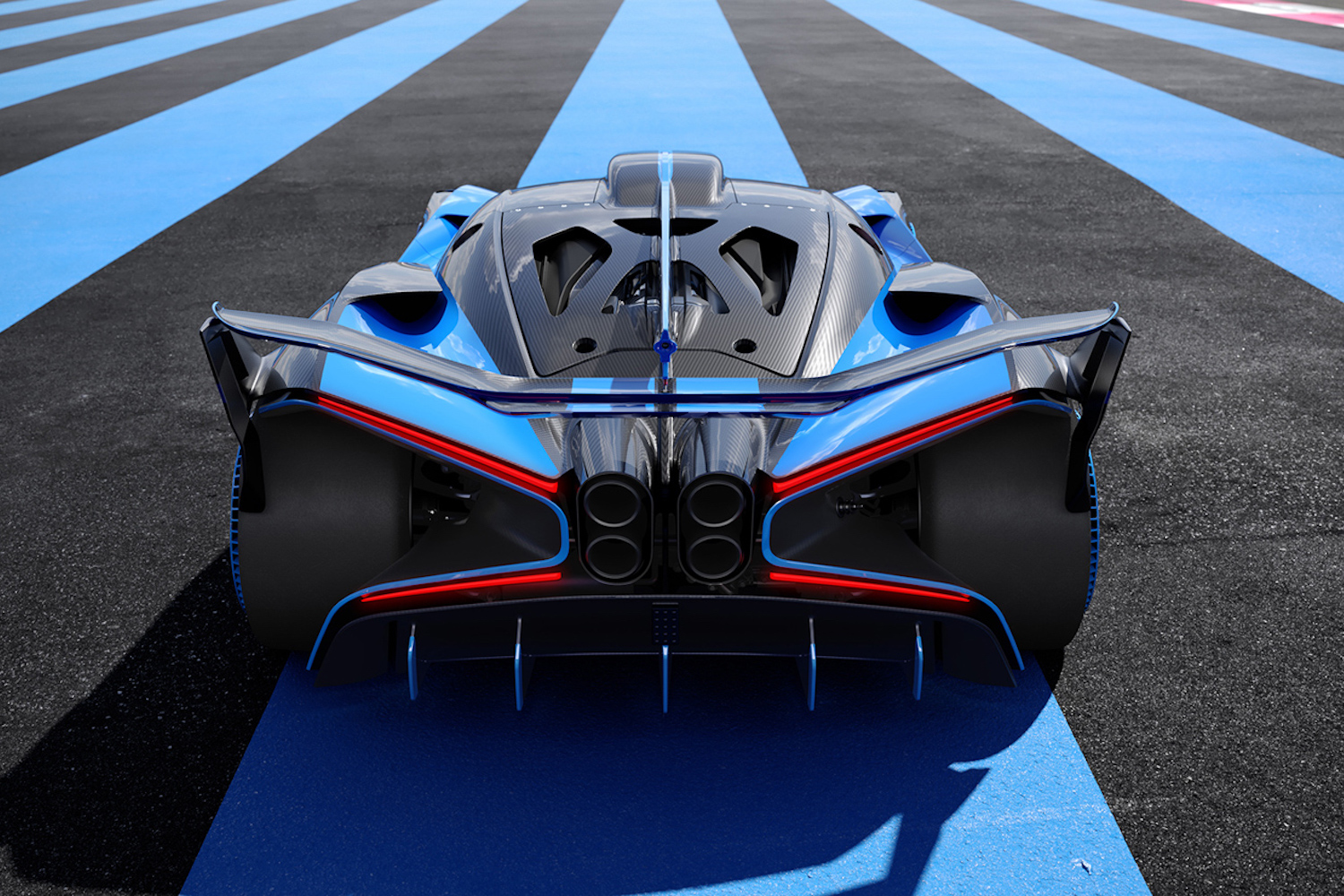Don't get your hopes up just yet, as this monster is - for the moment - only a design study. But it's called the Bugatti Bolide and it's the answer to the most brilliant question: what if the French hypercar manufacturer decided to build a lightweight shell around its thumping great 8.0-litre, quad-turbo, W16 petrol engine?
Outrageous power-to-weight
This technological concept has not been confirmed for series production by Bugatti as yet (boooooo!), but here are the key thoughts behind it. Installed in the middle of the Bolide is that aforementioned nuclear powerplant, the W16. It has been tuned to develop a farcical 1,850hp, with the target weight of 1,240kg. Bugatti therefore claims 0.67kg/PS, or - in our preferred metric - that's 1,492hp-per-tonne. Gulp.
Presumably plucking these lap times from the air, the marque is claiming the Bolide would lap Le Mans' Circuit de la Sarthe in 3:07.1 minutes and the Nordschleife in 5:23.1 minutes. To put those figures into some context, the fastest-ever lap of Le Mans (3:14.791 minutes) was set during qualifying in 2017 by Kamui Kobayashi, driving the Toyota TS050 Hybrid sports prototype racer, while the Green Hell's record currently stands at 5:19.55 minutes - posted in 2018 by the Porsche 919 Hybrid Evo and breaking a benchmark that had previously stood for 35 years. So what Bugatti is saying is that the Bolide should be faster than a full-on race car from the very highest echelons. Goodness gracious!
Beyond this, Bugatti says the Bolide should be able to exceed 500km/h, thanks to 1,850Nm backing up the 1,850hp from the 8.0-litre engine. The four turbochargers are retained on the W16 and all of the oil circuit, oil pressure, check valves, baffles, oil tanks, oil reservoirs, and pump design of the dry sump lubrication have been optimised for the high centrifugal forces on track. The drivetrain's weight has been reduced and air-to-air intercooling with water pre-cooling replaces water-to-air intercooling. Bugatti says the Bolide's cooling system's flow exceeds even that of a Formula 1 car.
Engineering of the highest level
The reduced weight has been enacted by the finest attention to detail throughout the Bolide's body. All of the screws and fasteners of the Bugatti concept are made out of titanium, while hollow, thin-walled functional components made of aerospace titanium-alloy are used in many places - these are 3D-printed and are no more than 0.5mm thick, but they still have a tensile strength of 1,250N/mm. The hybrid components, such as the half-a-metre long auxiliary driveshaft, combine wound high-strength and ultra-stiff carbon fibres with 3D-printed titanium end fittings, allowing them to withstand a constant operating temperature of 260 degrees Celsius and yet trimming their weight by half.
Moving on to aerodynamics, the morphable outer skin of the intake scoop on the roof is said to be a 'worldwide innovation'. At slow speeds, the surface of the scoop remains smooth but, when it goes faster, a field of bubbles bulges out to reduce the drag of the scoop by ten per cent and to ensure a 17 per cent reduction in lift forces. Airflow onto the rear wing is also optimised as a result and so, at 320km/h, the Bolide is generating 1,800kg of downforce at the rear and 800kg of downforce at the front. Stopping power is handled by racing brakes with ceramic discs and coatings, while the callipers weigh 2.4kg each. Even the Bolide's massive wheels, measuring 340mm wide at the front and 400mm wide at the rear (for comparison, the Chiron's wheels are 285mm at the front and 355mm at the rear), have forged magnesium alloys, meaning the centre-lock front wheels weigh just 7.4kg apiece, while the massive rears are 8.4kg each. A compressed-air-driven jack system with four rams is also incorporated for fast tyre changes, while there's the ability to pressure-refuel the Bugatti too.
Finally, the monocoque is made of carbon fibre and the overall height of the vehicle is just 995mm, which is exactly the same measurement as the legendary and historic Bugatti Type 35.
'Riding on a cannonball'
"Bugatti stands for the continuous quest for technological innovations - in alignment with the company's brand values of excellence, courage, dedication. And Bugatti never stands still. We are perpetually aiming for new and exciting goals, and the question that we always keep in mind is: what if?" says Stephan Winkelmann, president of Bugatti. "We asked ourselves how we could realise the mighty W16 engine as a technical symbol of the brand in its purest form - with solely four wheels, engine, gearbox, steering wheel and, as the only luxury, two seats. Important aspects of our considerations were fine-tuning our iconic powertrain without any limitations as regards the weight-to-power ratio. These considerations resulted in the Bugatti Bolide. An uncompromising experiment, a thoroughbred, a Pur Sang that, in its brute exclusivity, impresses above all with high performance, low weight, and a driving experience in a whole new dimension. Driving the Bolide is like riding on a cannonball."


